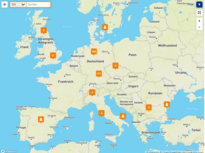- Products
- Solutions
Responsibility
Company Size
Customers
- Knowledge
- Partner
- About us
Belden Inc.
Recognized for quality, performance and the realization of an increasingly networked future.

Award for macmon NAC
Network Security Solution of the Year 2023
- News
Event information
10/22/2024 | it-sa 2024
- Trial















